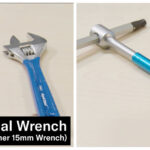For those new to cycling, or even seasoned riders curious about their performance, the question “What’s a good Average Bike Riding Speed?” often arises. It’s a natural curiosity, but pinpointing a simple answer is trickier than it seems. Average speed in cycling isn’t a straightforward metric for comparison due to a multitude of influencing variables. Let’s explore why average speed can be misleading and what factors truly dictate how fast you ride.
The Terrain and Environment Matter Immensely
Imagine comparing a cyclist in pancake-flat Florida to someone tackling the hills of San Francisco. Their average speeds will naturally differ dramatically. Hills, elevation changes, and the overall topography of your riding location are primary determinants of speed. A ride through a flat coastal route will yield a much higher average speed than a ride through rolling hills or mountainous terrain.
Beyond hills, environmental conditions play a significant role. Wind, in particular, is a major speed inhibitor. Even a gentle headwind can significantly reduce your average speed, while a tailwind can provide a noticeable boost. Temperature also affects performance; extreme heat or cold can lead to reduced efficiency and slower speeds. Riding in optimal weather conditions will invariably result in a higher average compared to battling harsh elements.
Your Bike and Gear: Equipment’s Impact on Speed
While the adage “it’s not about the bike” holds some truth in cycling spirit, equipment does contribute to speed. Bike weight, particularly, is a factor. Many cyclists who’ve upgraded to lighter carbon fiber bikes report feeling an immediate speed increase, sometimes as much as 5-10%. This improvement, while potentially amplified by rider fitness, highlights the impact of bike technology.
Tires are another equipment aspect influencing speed. Tire choice, pressure, and rolling resistance can create subtle but measurable differences in how efficiently you move. Aerodynamic components, like helmets and clothing, also become more relevant at higher speeds, although their impact is less pronounced at typical average speeds.
It’s also worth acknowledging the psychological element. A new, lighter, or more advanced bike can boost confidence and motivation. This “placebo effect” can lead to increased effort and, consequently, higher speeds. However, it’s crucial to remember that rider fitness and effort are far more significant than marginal equipment gains. Being overweight, for example, negates any minor weight savings on the bike itself.
Distance and Ride Duration: How Far You Go Affects Speed
Average speed isn’t constant across different ride lengths. Shorter rides, especially those under an hour, often exhibit slightly lower averages. This is because the initial phase of any ride involves a warm-up period where your muscles aren’t yet firing at full capacity. Rides lasting between one and two hours tend to showcase the highest average speeds as you reach peak performance.
As ride duration extends beyond two hours, fatigue begins to creep in, potentially causing average speed to decline. For many recreational cyclists, rides exceeding three hours can become physically demanding, leading to a natural reduction in sustained speed. Endurance, training, and pacing strategy become increasingly important factors in maintaining a good average speed over longer distances.
Age and Experience: The Cyclist’s Profile
A cyclist’s age is a factor, but experience often plays a more dominant role. Experienced cyclists, regardless of age, tend to develop a higher proportion of slow-twitch muscle fibers, beneficial for endurance and sustained effort. Cardiovascular fitness and efficient pedaling techniques honed over years contribute significantly to consistent speeds.
While older riders might not possess the explosive power for sprints or steep, short climbs of younger riders, they often excel at maintaining a steady pace over longer distances. It’s common to see cyclists in their 40s and 50s keeping pace with or even outperforming younger riders in group settings, demonstrating that experience and endurance can often outweigh age-related factors.
The Power of Riding in a Group: Teamwork Makes the Speed Dream Work
Group riding, particularly in a paceline formation, introduces a significant speed advantage. Drafting behind another cyclist drastically reduces wind resistance. While the exact benefit varies with wind conditions and group size, it’s widely accepted that riding in a group can increase average speed by 20-30% or even more compared to riding solo.
This explains the seemingly superhuman speeds achieved in professional cycling events like the Tour de France, where riders in the peloton (the main group) can maintain averages around 25 mph over extremely long distances. The aerodynamic advantage of the large group is a primary contributor to these impressive speeds. Therefore, comparing your solo average speed to that of a group ride, or especially to professional cyclists, is not a realistic comparison.
General Average Speed Guidelines for Solo Cyclists
Keeping all these variables in mind, it’s still helpful to have some general benchmarks for average cycling speed for solo riders on mixed terrain (rolling hills approximately 30% of the time, with the remainder being relatively flat):
- Beginner, Short Distance (10-15 miles): Average speed of 10-12 mph. Most individuals can achieve this average relatively quickly with minimal training.
- More Experienced, Short-Medium Distance (20-30 miles): Average speed of 14-16 mph. This range indicates improved fitness and cycling efficiency.
- Reasonable Experience, Medium Distance (40 miles): Average speed of 16-19 mph. At this level, consistent training and better pacing strategies are typically involved.
- Competent Club Rider, Regular Training, Medium-Long Distances (50-60 miles): Average speed of 20-24 mph. This range signifies a good level of fitness, dedicated training, and efficient cycling technique.
It’s crucial to remember that these are just guidelines. Many cyclists may never reach averages above 13-15 mph, and that’s perfectly fine. The joy of cycling comes from personal enjoyment and achieving your own goals, not necessarily hitting a specific speed target. Conversely, highly trained cyclists in favorable conditions or group rides can easily exceed 25+ mph.
Ultimately, focus on enjoying the ride, improving your fitness at your own pace, and using average speed as a tool to track your personal progress rather than a measure of comparison against others.


